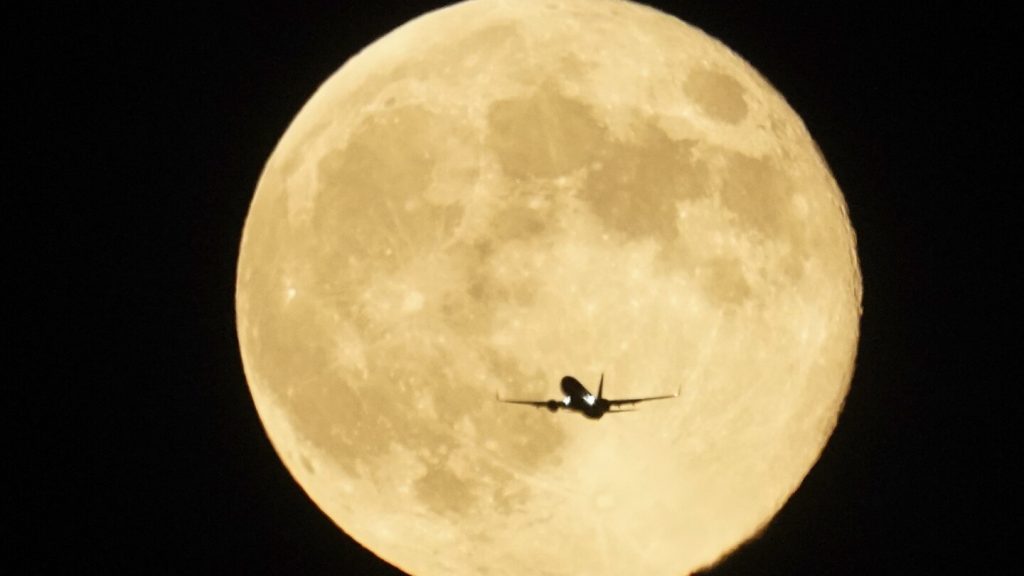This week, skywatchers are in for a special treat as the final supermoon of the year will be visible, showcasing a lunar spectacle that may not occur for a while. Slated for its peak on Thursday, this supermoon will rise at a distance of approximately 225,000 miles (361,867 kilometers) from Earth, followed by its full moon phase the next day. It is noteworthy that this event happens just after the Taurid meteor shower and precedes the more active Leonids, providing an exciting celestial backdrop. Last month’s supermoon was the closest of the year, coming in around 2,800 miles (4,500 kilometers) nearer to Earth, marking an intriguing celestial series that began in August. For lunar enthusiasts, the next instance of three supermoons will not occur until October of 2025.
The term “supermoon” may sound more sensational than scientific, yet it describes an actual celestial event. A supermoon occurs when a full moon coincides with the moon’s closest approach to Earth during its elliptical orbit, an occurrence that typically takes place three to four times annually. While the visual perception of size may change with a supermoon, the actual size difference is minimal and often challenging to appreciate, even for experienced observers. The phenomenon tends to create an impression of a larger and luminous moon on the horizon, captivating many who take the time to look skyward.
This year has proudly boasted four supermoons, each distinguished by their respective distances from Earth. The August supermoon was recorded at about 224,917 miles (361,970 kilometers) away, followed by the September supermoon, which was slightly closer at 222,131 miles (357,486 kilometers). Interestingly, a partial lunar eclipse coincided with September’s event, providing an added layer of intrigue as Earth’s shadow created a striking visual effect on the moon. The October supermoon took the title of the year’s closest, at a distance of 222,055 miles (357,364 kilometers), leading to heightened expectations for the spectacle this month as it approaches its closest point.
For those wondering about the significance of yet another supermoon, experts indicate that only the most astute observers can truly notice the nuanced differences in size during these events. However, a supermoon can be markedly brighter, appearing up to 30% more luminous than an average full moon. This increased brightness enhances the moon’s visibility, creating ideal conditions for skywatchers and photographers alike. As countries across the globe enhance their lunar exploration initiatives, including landers and future manned missions, the moon has become a symbol of our renewed interest in space exploration.
While this supermoon may not present a radically different experience for the casual observer, it serves as a reminder of the moon’s constant presence and its cyclical nature in our sky. With every lunar event, public curiosity about space and science can be reignited, inspiring people of all ages to connect with the cosmos. The engagement surrounding such celestial occurrences is essential in fostering an understanding of astronomy and the broader sciences, making the supermoon event much more than just an astronomical spectacle.
As sky enthusiasts prepare to witness this celestial wonder, it is a great opportunity for education and appreciation of the universe. With the ongoing advancements in space exploration and the planned endeavors to land astronauts on the moon, the public’s interest is poised to rise alongside the brightness of the supermoons. Such phenomena encourage scientific inquiry and make the study of our solar system more accessible, inviting everyone to take a moment, look up, and appreciate the large celestial body that has fascinated humanity for centuries.

